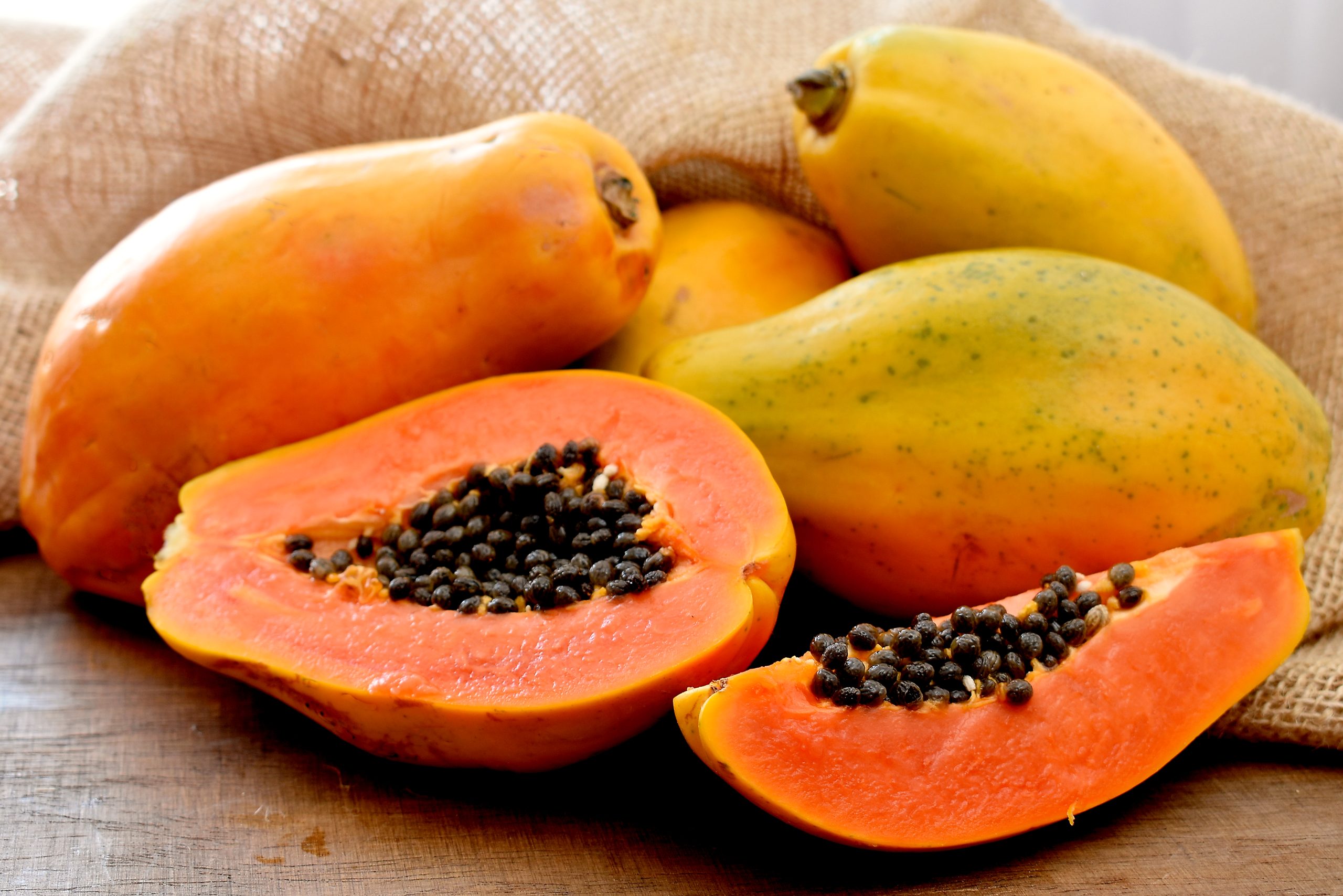Papaya is a tropical fruit that is native to Central America but is now grown in many other parts of the world. It has a soft, juicy texture and a sweet, musky flavor and is known for its health benefits.
Table of Contents
What is a Papaya?
Papaya is a tropical fruit that belongs to the Caricaceae family. It is also known as pawpaw, tree melon, or papaw. The papaya is native to Central and South America but is now grown in many tropical climates and regions worldwide, including India, the Philippines, and Hawaii.
Papaya is a large fruit that can grow up to 20 inches (50 cm) long and weigh up to 20 pounds. It has a soft, fleshy interior, usually orange or yellow, filled with tiny, black seeds. The fruit is oblong or oval-shaped, with a thin, green skin that turns yellow or orange when ripe. Papayas have a sweet, musky scent and a soft, buttery texture.
Regarding flavor, papayas have a sweet, tropical taste similar to a cross between a mango and a peach. The flesh is soft and juicy, with a slight hint of muskiness. The seeds inside the fruit are edible but have a bitter taste and are usually discarded.
In addition to being eaten fresh, papaya fruits are used in various culinary dishes, including salads, salsas, smoothies, and desserts. The fruit is also commonly used in skin care products due to its high vitamin C content and antioxidants.
The History of Papaya
The true roots of papaya (Carica papaya) remain a mystery as its pre-Columbian past has insufficient documentation.
However, it is widely believed to have originated in Mesoamerica and was introduced to the Caribbean and South America by the Spanish, who found its vibrant salmon-orange hue alluring. Papaya’s popularity continued to spread, with Dutch and Portuguese colonists carrying the fruit to Africa in the 17th century and eventually to Southeast Asia.
Papaya is also considered one of the world’s most cultivated tropical crops. It is popular in southern Mexico, Central America, Florida, India, Indonesia, Brazil, and Nigeria.
From 2010, most Hawaiian papaya plants were genetically modified.
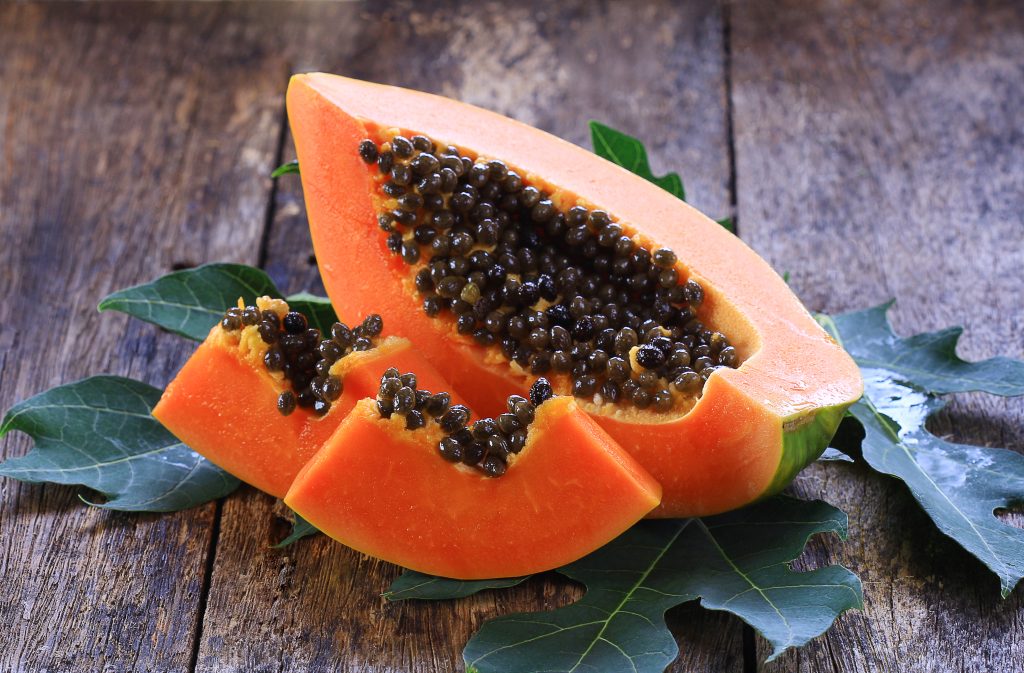
What Does a Papaya Taste Like?
Papaya has a sweet and musky flavor and a soft buttery texture. When ripe, the flesh is a bright orange color and is very juicy. The flavor is often described as a cross between a peach and a mango, with some notes of melon and citrus.
When eaten raw, the flavor of the papaya is at its peak. You can eat papaya fresh, either by itself or added to fruit salads, smoothies, or yogurt bowls. It can also be used to make sauces or added to desserts like cakes or puddings.
Papaya is not typically cooked, but you can use it as a cooked ingredient in some recipes (for example, jams). The fruit is usually simmered or sautéed until it softens and has a mellow flavor. The cooked fruit can be used as a topping for pancakes, waffles, oatmeal, or as an ingredient in sauces or stews.
Papaya seeds are also edible, but most people prefer not to eat them. Their taste is described as bitter and peppery.
How to Tell When Papaya is Ripe
When it comes to determining the ripeness of papaya, there are a few visual characteristics that you can look out for:
| Color | The green skin will slowly turn yellow as the papaya ripens. Once it’s mostly yellow, it’s ready to be enjoyed. Some papayas may have green patches even when they are ripe, so don’t solely rely on color to determine ripeness. However, green papaya is typically unripe. |
| Texture | The skin of ripe papaya will feel slightly soft to the touch, almost like the texture of a ripe avocado. |
| Firmness | A ripe papaya should have a bit of give when you press your fingers against it, but it shouldn’t be too mushy. |
| Scent | A ripe papaya will have a sweet and fruity aroma. It may be overripe or spoiled if it has a strong or unpleasant smell. |
| Smoothness/Roughness | A ripe papaya should have smooth, unblemished skin. Avoid papayas with cracks or bruises, as these may indicate that the fruit is overripe or damaged. |
Unripe papayas can be ripened. Here are some ways to speed up the process:
- Put the papaya in a paper bag and fold or roll it closed. Add a banana that is ripe to the bag. This will ripen the fruit in about two to three days, depending on the initial ripeness.
- Score the skin of the papaya with a knife and put it in the paper bag. This will help release ethylene and ripen the fruit more quickly, producing extra-sweet papaya.
Are Papayas and Mangos Related?
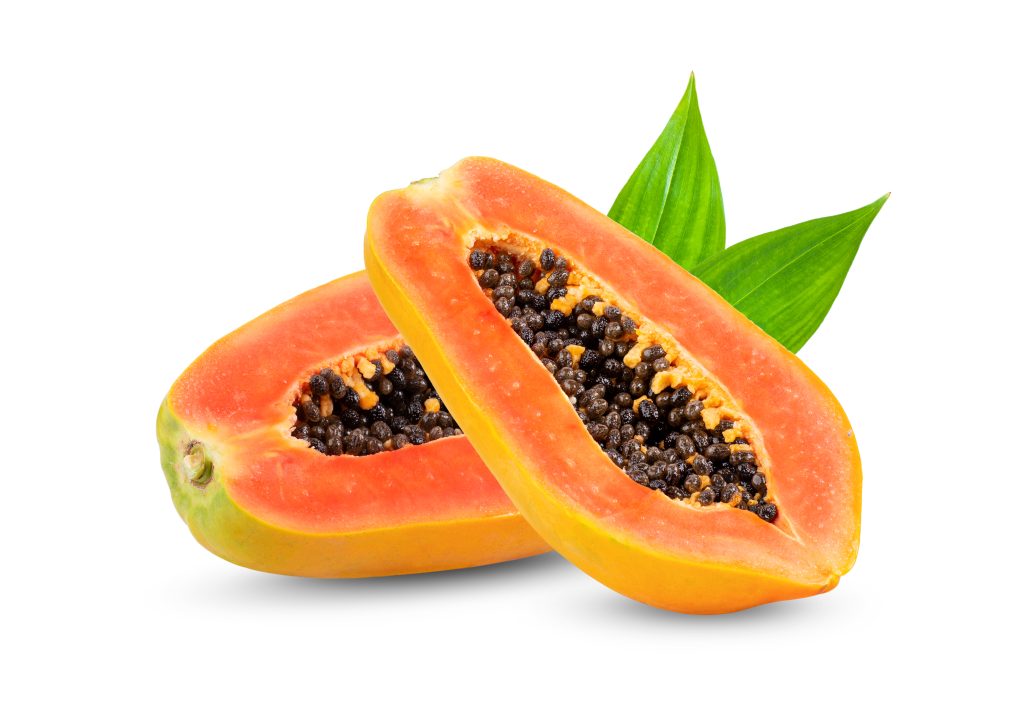
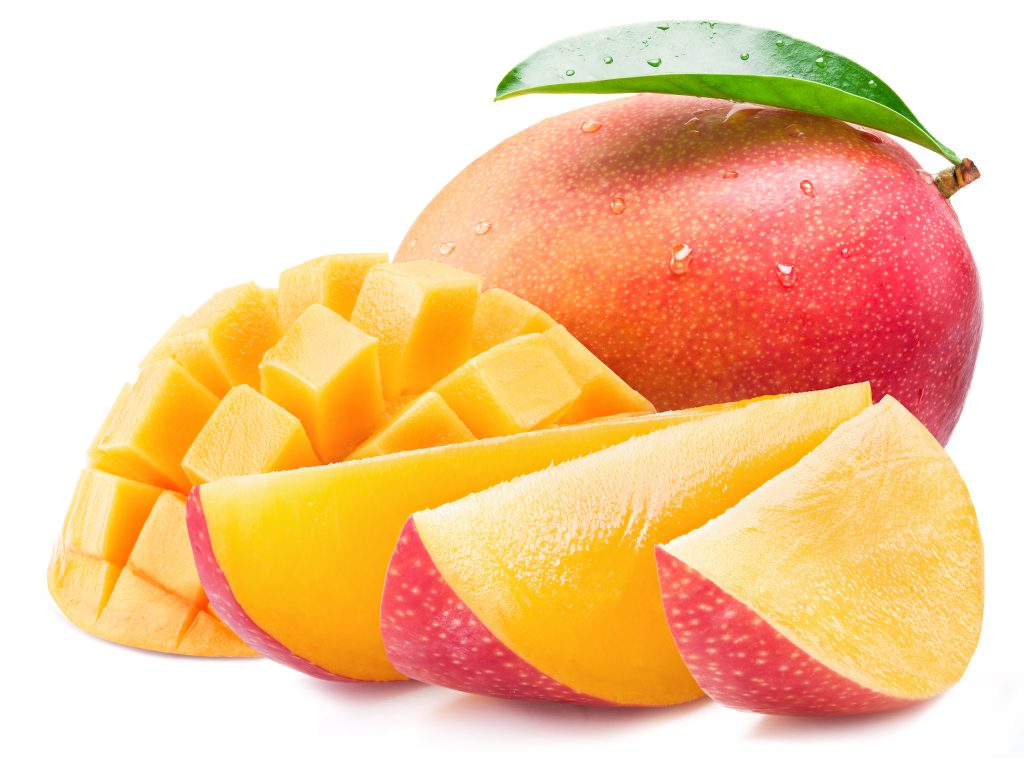
Papayas and mangoes are tropical fruits belonging to the same family, Caricaceae. However, they belong to different genera, with papayas in the genus Carica and mangoes in the genus Mangifera.
Both fruits are native to tropical regions and are known for their sweet, juicy flesh. They are also good sources of vitamins and minerals, especially vitamin C and fiber.
Papayas are typically larger than mangoes, with a cylindrical shape and green or yellowish skin that turns orange when ripe. The flesh of ripe papaya is usually bright orange and has a sweet, musky flavor.
Mangoes are smaller and have a more rounded shape. Depending on the variety, they have reddish-green skin that turns yellow, orange, or red when ripe. The flesh of a ripe mango is usually a deep yellow or orange color and has a sweet, fruity flavor.
Papayas have a soft, almost creamy texture, while mangoes have a firmer, more fibrous texture.
Cooking with Papaya
Here are the easy steps for preparing papaya:
- The first step when preparing papaya for cooking is to wash it thoroughly under running water.
- Then, cut the fruit in half lengthwise and remove the seeds with a spoon.
- Finally, peel off the skin with a sharp knife or vegetable peeler.
Papaya is used in various dishes across many traditional cuisines, including Caribbean, Mexican, Thai, and Indian cooking.
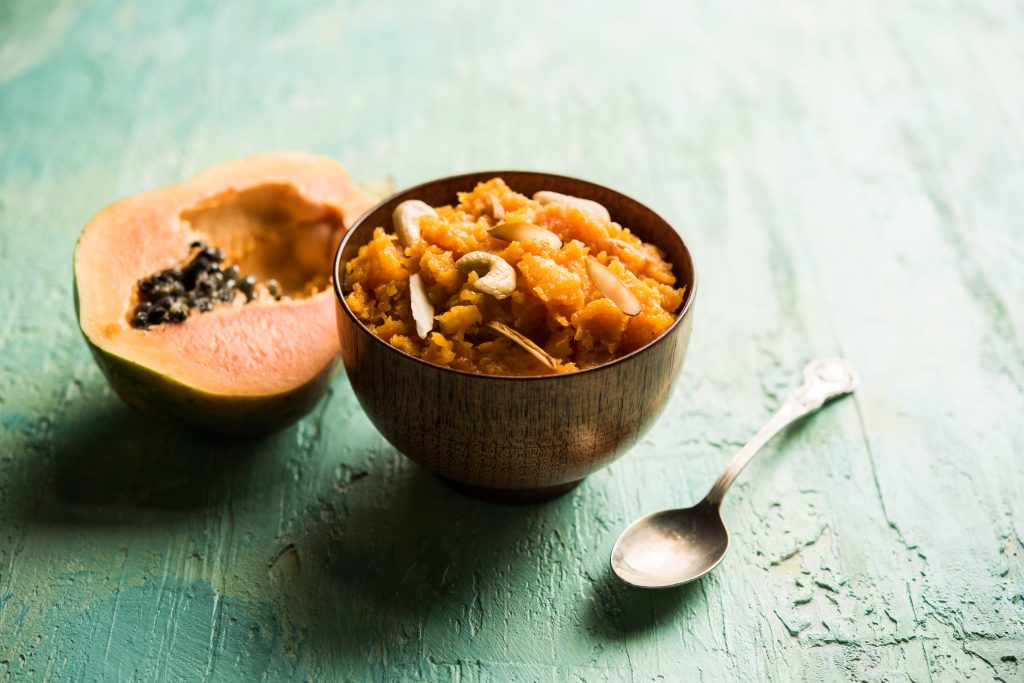
Here are some examples of popular papaya dishes:
Papaya Halwa: Papaya Halwa is an Indian dessert made from papaya pulp and complemented by some sugar and cardamom. Lastly, it’s perfect topped with some crushed cashews. The best part about making this dish is that you don’t need any special equipment or ingredients.
No-Churn Papaya Ice Cream: A dessert that’s as refreshing as it is easy to make. With this recipe, you don’t need fancy ice cream machines or an army of sous chefs to whip up a creamy papaya treat.
Papaya Milk Jelly: This refreshing and colorful jelly is perfect for a hot summer day or whenever you want something sweet, fruity, and creamy. It’s great served in small bowls as an appetizer or dessert.
Papaya Black Bean Salad: This salad combines the sweetness and tanginess of papaya with the earthy flavor and texture of black beans. Not to mention it is packed with nutrients! The combination of flavors makes this salad unique and delicious, so you’ll never get bored eating it again and again!
How to Store Papaya
Proper storage techniques can help extend the shelf life of papayas and maintain their quality. Here are some tips on how to store papayas:
| On the counter | If the papaya is not ripe, you can store it at room temperature, on the kitchen counter, away from direct sunlight. This will help it ripen evenly over a few days. |
| In the fridge | Ripe papayas should be stored in the refrigerator, either whole or cut into pieces. Wrap the papaya tightly in plastic wrap or aluminum foil, or store it in an airtight container to keep it fresh for 3-5 days. |
| Frozen | You can freeze papayas by cutting them into small pieces, removing the seeds, and storing them in airtight freezer bags or containers. You can keep frozen papaya for up to 6 months. |
| Dried | Papayas can be dried to extend their shelf life. Cut the papaya into thin slices and place them in a food dehydrator or an oven set at a low temperature (around 140°F) until they are dry and slightly chewy. Store the dried papaya in an airtight container in a cool, dry place for up to 6 months. |
Nutritional Benefits of Papaya
Papaya is rich in vitamin C, vitamin A, fiber, and antioxidants such as carotenoids and lycopene. Lycopene and vitamin C may specifically aid in heart health, reducing the risk of heart disease. It also has magnesium, vitamin K, and vitamin E.
Papain, an enzyme in papaya, can break down tough protein chains in meat, helping with digestion and IBS (irritable bowel syndrome). Because of its low-calorie content, it can help you in your weight loss journey.
Antioxidants in papaya can neutralize free radicals, lower oxidative stress, reduce cancer risk, reduce inflammation, and enhance heart health. The carotenoids lutein and beta-carotene may be responsible for reducing the risk of cancer.
Fermented papaya can reduce oxidative stress in older adults and people with prediabetes, mild hypothyroidism, and liver disease. However, more research is needed before recommending it for any affliction.
Despite the numerous health benefits of papaya, some people can have allergic reactions to papaya. So if this is your first time trying it, proceed with caution.
Where to Purchase Papaya
Most large grocery stores carry papayas in their produce section. They are usually available year-round, but the quality may vary depending on the season.
Some specialty stores focusing on tropical fruits may carry a wider variety of papayas. They may also have more information on where the fruit was grown and how it was harvested.
Lastly, if you live in an area with a local farmers’ market, you can find fresh, locally grown papayas during the peak season, from late summer to early fall.

